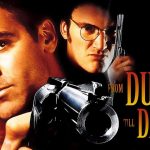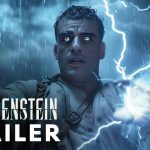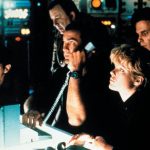Batman Begins (2005)
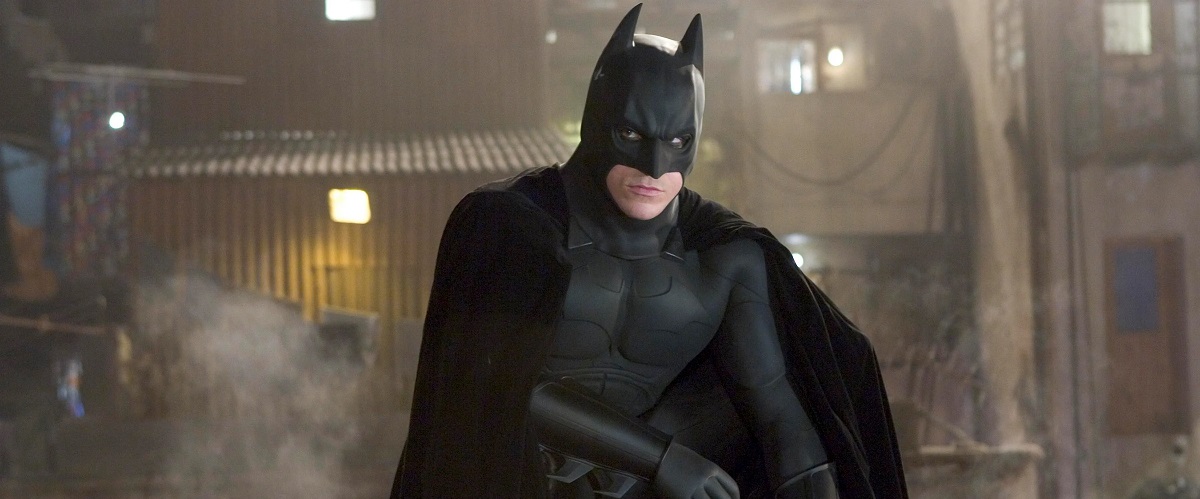
Batman Begins (2005) Review – The Dark Knight’s Gritty Rebirth
Introduction
Christopher Nolan’s Batman Begins (2005) redefined the superhero genre, presenting a grounded and realistic take on the Caped Crusader. Serving as the first installment in The Dark Knight Trilogy, the film explores the origins of Bruce Wayne’s transformation into Batman, delving into his trauma, training, and ultimate mission to save Gotham. Featuring stellar performances from Christian Bale, Liam Neeson, and Michael Caine, Batman Begins blends action, psychology, and crime drama to create one of the most compelling superhero films of all time.
Plot Summary
After witnessing the murder of his parents as a child, Bruce Wayne (Christian Bale) grows up tormented by guilt and a thirst for justice. Disillusioned with Gotham’s corruption, he embarks on a journey of self-discovery, leading him to the League of Shadows, an elite group of vigilante warriors led by Ra’s al Ghul (Liam Neeson). Trained in stealth, combat, and fear tactics, Bruce ultimately rejects the League’s extremist ideology and returns to Gotham to wage war against crime on his own terms.
With the help of his trusted allies—Alfred Pennyworth (Michael Caine), Lucius Fox (Morgan Freeman), and Jim Gordon (Gary Oldman)—Bruce creates the Batman persona. He soon faces off against crime lord Carmine Falcone (Tom Wilkinson), corrupt psychiatrist Dr. Jonathan Crane (Cillian Murphy), also known as Scarecrow, and the true mastermind behind Gotham’s downfall: Ra’s al Ghul.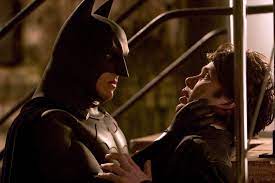
Themes and Symbolism
Fear as a Weapon
The film explores fear as a psychological and tactical tool. Bruce learns to conquer his own fears and uses them against criminals, while Scarecrow’s hallucinogenic toxin turns fear into a literal weapon.
Justice vs. Revenge
Bruce struggles with his desire for vengeance and his responsibility to uphold true justice. His refusal to kill differentiates him from the League of Shadows, reinforcing Batman’s moral code.
Corruption and Redemption
Gotham’s decay, fueled by crime and corruption, is central to the film. Bruce’s mission to restore hope to the city mirrors the real-world struggle between systemic decay and the fight for change.
Performances
Christian Bale as Bruce Wayne/Batman
Bale delivers a multifaceted performance, convincingly portraying Bruce’s evolution from a lost soul to a determined hero. His portrayal balances intensity, vulnerability, and charisma, making him one of the most definitive Batman actors.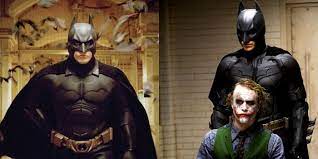
Liam Neeson as Ra’s al Ghul
Neeson brings gravitas to the role, making Ra’s al Ghul both a mentor and a formidable antagonist. His ideological conflict with Bruce adds depth to the story.
Michael Caine as Alfred Pennyworth
Caine’s Alfred provides warmth, wisdom, and humor, serving as Bruce’s moral compass and father figure.
Cillian Murphy as Dr. Jonathan Crane/Scarecrow
Murphy’s chilling performance as Scarecrow adds an eerie psychological horror element to the film. His calm yet unsettling demeanor makes him a standout secondary villain.
Gary Oldman as Jim Gordon
Oldman’s portrayal of Gordon is grounded and sincere. His character embodies integrity and serves as one of Batman’s most valuable allies.
Cinematography and Visual Style
Nolan’s collaboration with cinematographer Wally Pfister results in a visually striking Gotham, blending neo-noir aesthetics with realism. The city feels alive, with a grittiness that contrasts sharply with previous stylized Batman adaptations. The practical effects and minimal CGI enhance the film’s authenticity.
Action Sequences and Sound Design
The action is choreographed with a sense of realism, avoiding over-the-top spectacle in favor of brutal, efficient combat. The Batmobile chase through Gotham is a standout sequence, showcasing the Tumbler’s power. Hans Zimmer and James Newton Howard’s score elevates every moment, with Molossus becoming an iconic Batman theme.
Cultural Impact and Legacy
Batman Begins reinvigorated the superhero genre, proving that comic book adaptations could be both dark and intellectually engaging. It paved the way for The Dark Knight (2008), which would go on to become one of the most critically acclaimed films of all time. The film’s influence can be seen in later superhero movies that adopt a grittier, more grounded approach.
Final Verdict
Batman Begins is a masterclass in storytelling, character development, and world-building. Nolan successfully reintroduces Batman with a depth rarely seen in superhero films, making it a must-watch for both fans of the genre and cinephiles alike.
For those who appreciate darker, character-driven superhero stories, Batman Begins remains one of the greatest origin films ever made.
Conclusion
With its intelligent script, compelling performances, and visionary direction, Batman Begins stands as a definitive superhero origin story. It is not just a great Batman film—it is a great film, period. The legacy of Batman Begins continues to shape the superhero genre, proving that even larger-than-life characters can have grounded, emotionally resonant stories.







